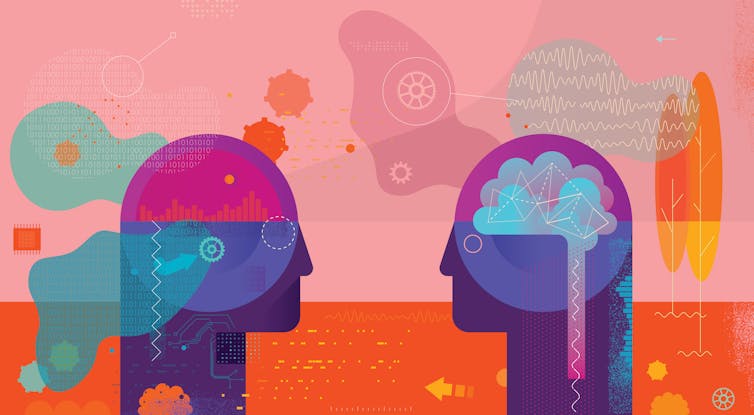Food insecurity is a feature of life for millions of South Africans. Food insecurity refers to a lack of regular access to enough safe and nutritious food for average growth and development and an active and healthy life. This may be due to unavailability of food or a lack of resources to buy it.
The extent of this was recently mapped by the Human Sciences Research Council. For example, in Gauteng province, South Africa’s economic powerhouse, 51% of households experience food insecurity. A national survey between 2021 and 2023 found Gauteng households were affected to different degrees: 14% faced severe food insecurity, 20% moderate food insecurity, and 17% mild food insecurity.
The research also found that South African households survive on nutrient-poor food groups such as cereals, condiments, sugars, oils and fats. Consumption of nutrient-rich food groups such as fruits, pulses, nuts, eggs, fish and seafood is limited.
Dietary diversity is useful for measuring food security. A diverse, nutritious and balanced diet prevents nutritional deficiencies and diseases. A fall in dietary diversity is linked to a rise in the proportion of people who are malnourished.
The HSRC findings were the most recent to point to a growing crisis of food insecurity in the country. In an earlier study, we examined the diets of people living in South Africa’s second largest city, Tshwane.
We found that due to income, and other socio-economic factors, none of the poor households in our study were getting adequate nutrients from what they were eating. Mostly they were eating cereals (grains such as wheat and maize), vegetables such as legumes, roots and tubers, and oils and fats because they couldn’t afford anything else. Most had little to no income. And most were poorly nourished.
On the basis of the findings we recommended a range of interventions. These included better implementation of existing policies aimed at opening up opportunities, such as the Expanded Public Works Programme. And we recommended campaigns be run to increase people’s awareness about nutritional foods and growing them.
The help of the private sector and NGOs is also recommended.
Mapping eating habits
The study measured what households were choosing to eat from among the various food groups. These were 775 households from food-insecure areas of Tshwane as mapped by the 2016 Statistics South Africa Community Survey. We asked which food groups had been eaten in the previous seven days by any household member at home, including food prepared at home but eaten, for example, at work (such as a packed lunch).
Twelve food choices were used: cereals, legumes, roots and tubers, vegetables, fruits, milk, eggs, meat, fats, fish, sweets and beverages.
The Principal Component Analysis was used to analyse the Tshwane study households’ consumption of these food groups. The analysis is widely used to derive dietary patterns from the daily eating patterns of households.
We then used the Simpson index to measure how nutrient rich the diets were. An index score greater than 0.5 shows a highly diversified diet. The Simpson Index was profiled on socio-economic determinants of food insecurity variables, such as age, household size, income, and food expenditure.
The average dietary diversity score was low for all the poor households in the Tshwane study.
What we found
In our survey, the households with the least diversified diets were those headed by women, people with no more than secondary education, unemployed people, and/or recipients of the social support grant. This suggests that the grants are insufficient to cover people’s food needs.
Households with low dietary diversity rarely reared animals or had food gardens.
Households chose mainly four food groups. The first group was associated with a vegetable-based diet (roots and tubers, legumes, vegetables, and fruit). The second group was associated with people who consumed sugar, honey and miscellaneous products (coffee, tea, soft drinks, and instant foods). The third group comprised people who consumed fats and proteins, eggs and milk products. The final group was associated with the consumption of cereals or staple foods.
It was not possible to identify a group of urban food insecure households that ate a mixed selection of all food groups. This suggests they all lacked adequate dietary requirements to boost nutrition. This was regardless of their socio-economic status.
We also found that households faced a number of obstacles beyond income constraints that limited their dietary diversity. These included unemployment, household size, education, and the lack of land, skills and resources to practise urban agriculture.
Next steps
The City of Tshwane in Gauteng has adopted numerous strategies to alleviate food insecurity. These include the 2017 climate response strategy, meant to reduce food insecurity due to climate vulnerability, and the Expanded Public Works Programme, which provides job creation and skills development, supporting sustainable socio-economic development and poverty reduction.
But execution has been suboptimal.
Poor coordination among government departments and agencies about priorities has led to interventions being ineffective.
A list of the challenges facing the public works programme was presented by a parliamentary monitoring group. They included delays in implementation and reporting as well as non-submission of quarterly evaluation reports by some public bodies.
As a result, funding from the central government to local and provincial administrations was withheld for the 2024/25 budget.
In addition, the City of Tshwane faces financial challenges that affect its ability to get things done. This means the city cannot solve the problem of food insecurity and nutrition alone.
What’s needed is collaboration between government, the private sector and civil society. Policies could include prioritising food security and nutrition, such as subsidies for nutritious foods, regulations to improve food safety and incentives for sustainable agricultural practices.
Second, public-private partnership must be established to implement food security programmes targeting marginalised households, urban smart agriculture, and community gardens.
Third, there is a need to fund research on innovative food production technologies and sustainable agriculture practices, and share industry data on food supply chains and consumer preferences.
Fourth, there is a need to conduct community-based research on food needs and barriers to access.
Fifth, contribution of financial resources by investing in startups and enterprises focused on improving food security and nutrition outcomes.
Finally, monitoring and evaluation frameworks need to be established to assess the impact of food security policies and programmes and ensure accountability and transparency in resource allocation.![]()
Adrino Mazenda, Senior Researcher, Associate Professor Economic Management Sciences, University of Pretoria
This article is republished from The Conversation under a Creative Commons license. Read the original article.



